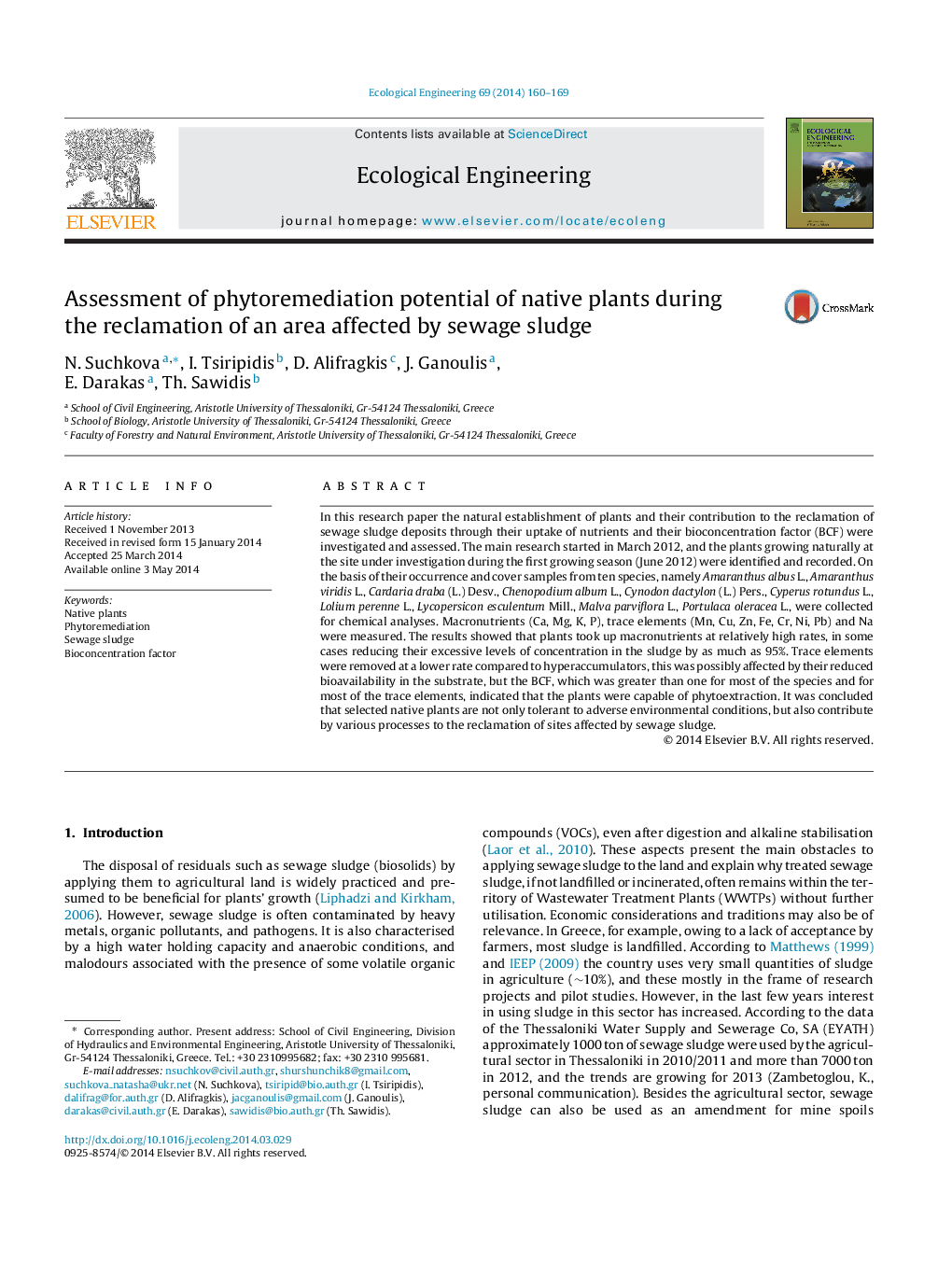| Article ID | Journal | Published Year | Pages | File Type |
|---|---|---|---|---|
| 4389386 | Ecological Engineering | 2014 | 10 Pages |
•Naturally occurring plants can assist phytoremediation in sites affected by sewage sludge.•The type of the sludge treatment unit affects the composition of the plant community and the vegetation cover.•Native plants reduce excessive nutrients and trace metals contained in sludge through their relatively high uptake.•Species as Malva parviflora, Portulaca oleracea, Cynodon dactylon, Chenopodium album and Amaranthus albus have the best potential.
In this research paper the natural establishment of plants and their contribution to the reclamation of sewage sludge deposits through their uptake of nutrients and their bioconcentration factor (BCF) were investigated and assessed. The main research started in March 2012, and the plants growing naturally at the site under investigation during the first growing season (June 2012) were identified and recorded. On the basis of their occurrence and cover samples from ten species, namely Amaranthus albus L., Amaranthus viridis L., Cardaria draba (L.) Desv., Chenopodium album L., Cynodon dactylon (L.) Pers., Cyperus rotundus L., Lolium perenne L., Lycopersicon esculentum Mill., Malva parviflora L., Portulaca oleracea L., were collected for chemical analyses. Macronutrients (Ca, Mg, K, P), trace elements (Mn, Cu, Zn, Fe, Cr, Ni, Pb) and Na were measured. The results showed that plants took up macronutrients at relatively high rates, in some cases reducing their excessive levels of concentration in the sludge by as much as 95%. Trace elements were removed at a lower rate compared to hyperaccumulators, this was possibly affected by their reduced bioavailability in the substrate, but the BCF, which was greater than one for most of the species and for most of the trace elements, indicated that the plants were capable of phytoextraction. It was concluded that selected native plants are not only tolerant to adverse environmental conditions, but also contribute by various processes to the reclamation of sites affected by sewage sludge.
